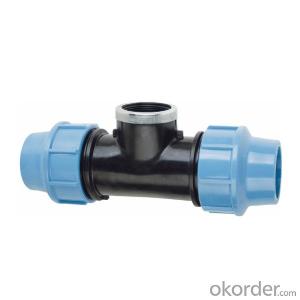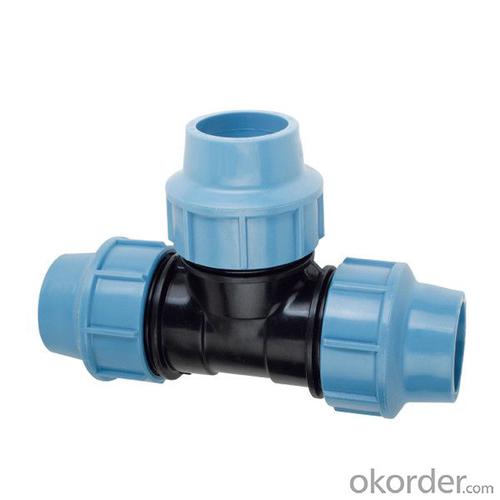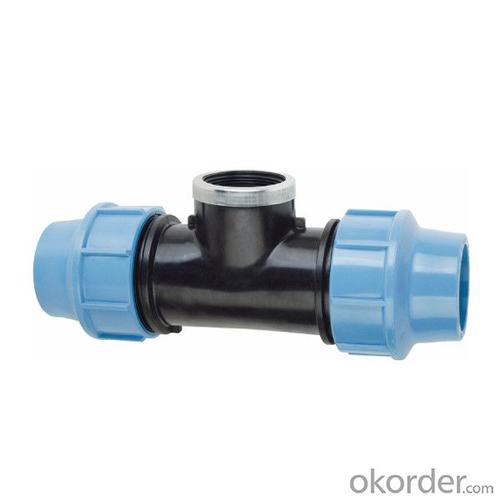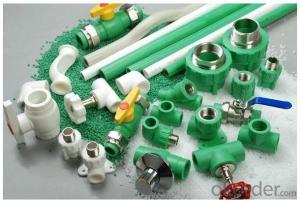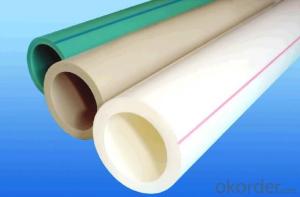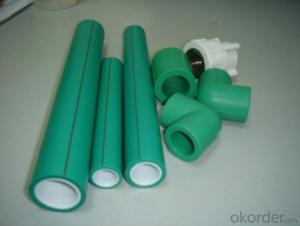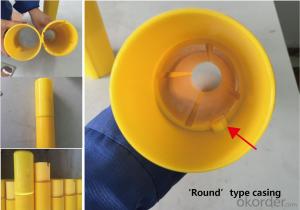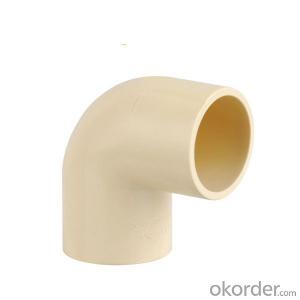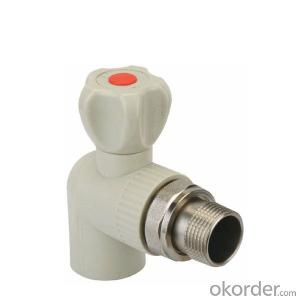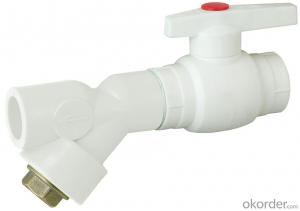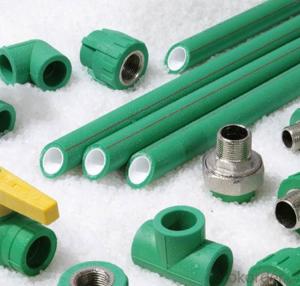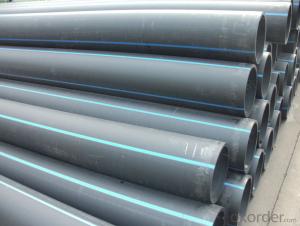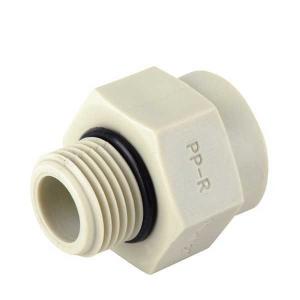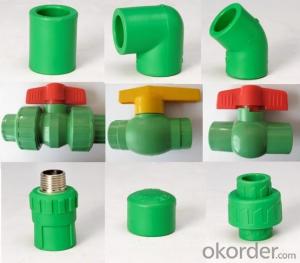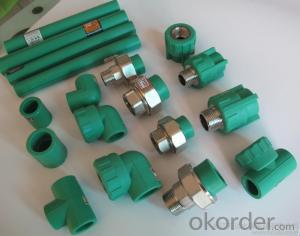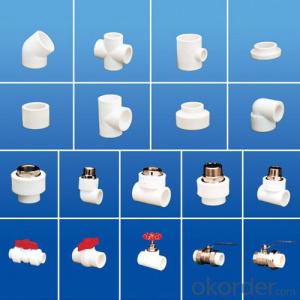PP-R Angle Radiator Brass Ball Valve with Superior Quality - Plastic Pipe Adapter Fittings
- Loading Port:
- Qingdao
- Payment Terms:
- TT OR LC
- Min Order Qty:
- 200 pc
- Supply Capability:
- 100000 pc/month
OKorder Service Pledge
OKorder Financial Service
You Might Also Like
Product Description:
CNBM PPR pipes are designed for Hot and Cold water supply and heating applications and it is suitable for different applications listed below:
• Hot and cold water supply in residential,
industrial, commercial & public projects
• Solar applications
• Compressed air systems
• Drinking water and liquids
• Watering systems for greenhouses & gardens
• Transportation of aggressive fluids
• Water purifying plants
• Radiator heating
Picture:
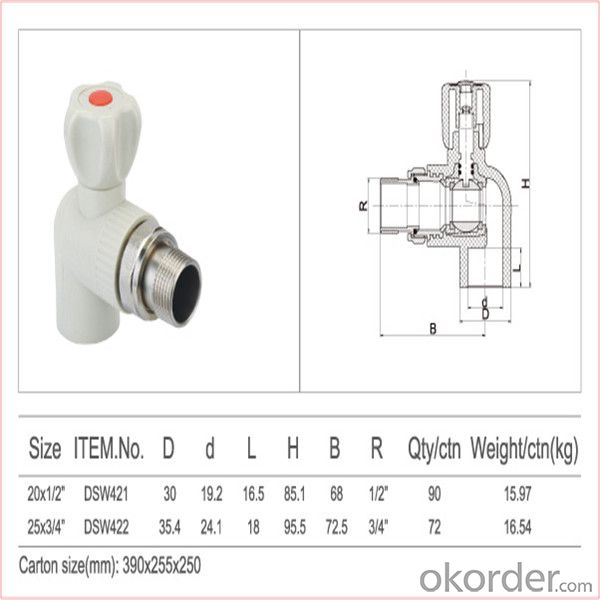
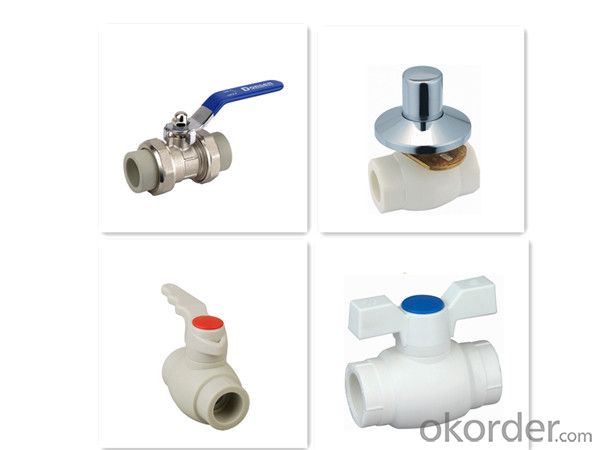
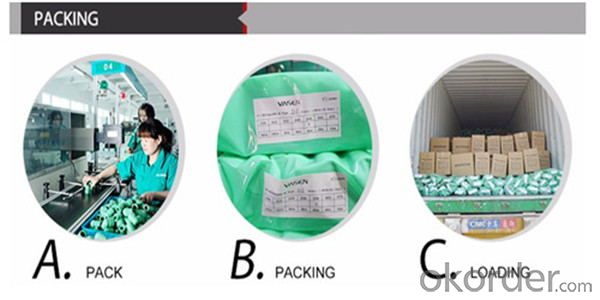
Product Applications:
Distribution for cool and hot water
Duct for drinkable water system
Pipes for kinds of high-temperature and low-temperature heating system
Pipes for heating and coolling settings in solar energy system
Connecting pipe for air conditioners
Product Advantages:
1. Greatly reduced linear expansion coefficient, only 1/4 of that of PPR.
2. 100% oxygen tightness, suitable for heating system.
3. Improved resistant to impulse under low temperature, resistant to UV-rays.
4. Easily detected by detector when embedded, owing to the metal layer.
FAQ:
Q1:How Can I Get A Sample?
A1:You can get samples by communicate with our export sales.
Q2:How Long Is Delivery?
A2:Delivery time will be30-45days according to order quantity.
Q3:What Is The MOQ?
A3:MOQ depends on different items.
Q4:What Is Our Normal Payments Terms?
A4:Our normal payment terms now is: T/T, L/C or western union,paypal
- Q: Are plastic pipe fittings suitable for offshore oil and gas platforms?
- Yes, plastic pipe fittings can be suitable for offshore oil and gas platforms. They offer advantages such as corrosion resistance, lightweight construction, and ease of installation. However, the suitability of plastic pipe fittings depends on various factors including the specific application, operating conditions, and industry regulations. In certain cases, more durable and robust materials like stainless steel may be preferred. It is essential to consider the requirements and consult with experts to determine the most appropriate fittings for offshore platforms.
- Q: How do you remove a plastic pipe fitting?
- To remove a plastic pipe fitting, you can try using a heat gun or a hairdryer to warm up the fitting, making it more pliable. Then, you can gently twist and pull the fitting while applying some force to detach it from the pipe. If this doesn't work, you can use a fitting removal tool or a pair of pliers to grip the fitting tightly and twist it counterclockwise until it loosens and can be pulled off.
- Q: Can plastic pipe fittings be used for irrigation in agriculture?
- Yes, plastic pipe fittings can be used for irrigation in agriculture. Plastic fittings are lightweight, durable, and resistant to corrosion, making them suitable for various irrigation systems. They are also cost-effective and easy to install, making them a popular choice for agricultural irrigation applications.
- Q: How to connect the steel tube and the steel tube?
- Characteristics of electric fusion welding:The electric heating welding technology is easy to construct and quick to implement. It can be used for welding and weldingThe welding reliability is good, and the strength and density are better than other connection methodsKeep the inner wall of the pipe smooth, without affecting the flow area
- Q: Can plastic pipe fittings be used for vacuum drainage systems?
- No, plastic pipe fittings are not suitable for vacuum drainage systems. These systems require specialized components that can withstand the negative pressure created by the vacuum. Plastic fittings may not have the necessary strength and durability to handle the demands of a vacuum drainage system. Metal fittings or specifically designed vacuum-rated fittings should be used instead.
- Q: Can plastic pipe fittings be used in rainwater harvesting systems?
- Yes, plastic pipe fittings can be used in rainwater harvesting systems. Plastic fittings are commonly used in such systems due to their durability, resistance to corrosion, and affordability. They are also lightweight and easy to install, making them a practical choice for rainwater harvesting applications.
- Q: How do you connect plastic pipe fittings to galvanized steel pipes?
- To connect plastic pipe fittings to galvanized steel pipes, you can use a transition fitting that has threads to match the galvanized steel pipe on one end and solvent cement to connect the plastic pipe fitting on the other end.
- Q: Who knows the size of the PVC pipe and what is the maximum and minimum size?
- Because of its harm to human body, Europe, Japan and South Korea and other countries have restrictions on using PVC as raw material and products. PVC resin has the advantages of plastic products is generally difficult to burn, abrasion resistance, chemical resistance, low leakage, good gas vapor. In addition, comprehensive mechanical energy, products transparent, electrical insulation, insulation, noise elimination, shock elimination, or better, is the most superior price than the general type of material. The defect is thermal stability and shock resistance is poor, whether it is hard or soft, PVC is easy to produce brittle during use. General PVC is not containing the relevant national standards allow the use of two (2 - ethylhexyl) adipate plasticizer (DEHA), DEHA in the high temperature (over 100 degrees Celsius) easily released, after contact with human health hazard. Because PVC is a hard plastic, to make it soft, a large amount of plasticizers must be added. Plasticizers are easy to release in a heated environment. If you are using DEHA, it will interfere with the human endocrine, cause women to breast cancer, birth defects, reduce the number of male sperm, or even mental disorders.
- Q: What are the common maintenance requirements for plastic pipe fittings?
- Common maintenance requirements for plastic pipe fittings include regular inspection for any signs of wear, cracks, or leaks. It is important to ensure that fittings are properly tightened and secured, and any loose or damaged fittings should be replaced immediately. Regular cleaning and removal of any debris or blockages is also necessary to maintain optimal performance. Additionally, it is important to avoid exposing plastic pipe fittings to extreme temperatures or chemicals that may cause damage.
- Q: Municipal water supply pipeline is a plastic pipe, then its matching valves and fittings are plastic?
- Municipal water supply pipe for water supply plastic pipe, the pipe supporting accessories, such as three pass joints, valves, etc., can be chosen according to specific circumstances.
Send your message to us
PP-R Angle Radiator Brass Ball Valve with Superior Quality - Plastic Pipe Adapter Fittings
- Loading Port:
- Qingdao
- Payment Terms:
- TT OR LC
- Min Order Qty:
- 200 pc
- Supply Capability:
- 100000 pc/month
OKorder Service Pledge
OKorder Financial Service
Similar products
Hot products
Hot Searches


